#urban densification
Explore tagged Tumblr posts
Text
This is good: The area around the United Center is getting a multi-year upzone to create a high-density hub of mixed-use residential, retail and offices!
Here’s the current view and a rendering of the project by master planning firm RIOS. It’s replacing a bunch of surface parking lots, and it’ll be served by new stations on the Pink and Green lines. With luck, this will serve to spur further densification between this area and the Loop.


Calgary should do something exactly like this around the Saddledome (or whatever replaces it), because it’s a similar urban stadium surrounded by parking lots and the Stampede grounds which sit vacant most of the year - not the best use of productive urban land - cutting off access to the riverfront too. Ideally this would be combined with burying or traffic-calming MacLeod Trail which is a barrier to pedestrian access.

3 notes
·
View notes
Text
If I had more spoons I'd make a whole photo-essay about my city's DISASTROUS execution of the 'self-propelled' city plan..
highlights include:
bike lane dividers blocking busses from leaving their stop at a 'gentle' angle; forcing them to turn into oncoming traffic to leave the curb
removing 3 crosswalks in my neighbourhood- because re-routed car traffic makes it 'unsafe' to cross.
adding separate traffic lights for bike lanes, which increases the wait time at all points of the intersection- so they reduced the time for the 'walk' signals.
How to tell someone's feelings about urbanism in 1 easy step
Ask them their opinion on Dutch Cycling infrastructure
#M00D#disability rights#access and accommodation#if your walkable city doesn't have room for wheelchairs--you've failed.#city planning#urban planning#densification
26K notes
·
View notes
Text
A Futile Assault on the Automobile
January 8, 2024 The Ottawa City Council approved a 4-storey, 18-unit residential building on a quarter-acre lot, in the middle of a residential area, without requiring parking. Yes, that is what they did, and I scratched my head, who is going to rent these units with no parking where there are no commercial facilities nearby? Oh yes, there is a bus, I think every half hour, that goes by the…
View On WordPress
#automobile#canada#densification#expressing opinions#no parking#ottawa#public transit#social engineering#urban sprawl
1 note
·
View note
Text


When the immediate housing shortage had been tackled in Germany after the Second World War there eventually was room for architects to experiment with new forms of housing. The most bold form surely was the Wohnhochhaus, the residential tower, that more often than not represented the tallest building in its surrounding neighborhood. Especially during the 1960s and 1970s these point high-rises sprung up all over Germany and functioned as anchor points and height-dominants of new quarters. In the meantime these buildings have of course have aged, some better, some less, but still remain historical references of a future-looking society and a booming economy. In view of the lingering housing crisis in Germany the residential tower deserves a closer look not only as a historical manifestation but also as a topical option for the housing of the future.
This dual function obviously also intrigued architects Lionel Esche and Lukas Brecheler who recently published a handy compendium with the modest title „Wohnhochhaus“: the book features numerous examples of this particular typology between Berlin and Schweinfurt, neatly documented in photographs, newly drawn plans and short explanatory texts. What immediately strikes the eye is the variety of forms, heights and layout variants that give each projects its individual character. Their individuality is also underscored by the nicknames many of the buildings have received over time and which again testify to their dominant character. At the same time the residential towers also were excesses of a failed concept that sought to achieve urbanity through density and which contributed to the bad reputation of high-density housing.
The authors also acknowledge this circumstance and don’t try to sell the buildings as glorious solutions for the necessary densification of dwelling in urban areas. Instead they offer a balanced perspective on the residential tower that accounts for both pros and cons and provides the reader with a roadmap to make up their own minds. Warmly recommended!
#apartment buildings#nachkriegsarchitektur#nachkriegsmoderne#architecture book#architectural history#housing#book
20 notes
·
View notes
Text
Six weeks after Li Wenliang blew the whistle in Wuhan on an emerging infectious disease in early 2020, cities around the world locked down and turned into hotspots. From Rome to Tokyo to San Francisco and Los Angeles, COVID-19 ripped through the most populated areas of the world. By the end of that year, America’s cities—Detroit, Boston, and New Orleans among them—had death rates from the virus 20 percent higher than other regions of the country.
In New York, where I serve as health commissioner, almost 50,000 residents died, the majority in the first three months, denting New Yorkers’ life expectancy by nearly five years. It was the steepest drop in lifespan in the world that year.
Public health institutions and the field as a whole learned much from our successes and failures during the pandemic. The critical nature of healthcare supply chains; supporting our public health workforce, especially at the front lines; the essential process of community engagement for healthcare promotion, vaccination, and disease prevention; the importance of combatting misinformation and disinformation online and in person; the need to tear down our data silos so we can make faster, better decisions. The list goes on and on.
However, as new threats arise and old ones intensify, there is still much to learn. Cities—concrete jungles that experienced the worst of COVID-19, and in some ways, struggled the most with the public health response in the early days of the pandemic—may be our best teachers on how to keep our world safe and healthy.
That’s because the sentinel cases for brooding public health threats, whether infectious or not, are often in cities. Cities are the canaries in the public health coal mine, for everything from mental health and homelessness, climate change to forced migration, substance use to sex trafficking. The way these challenges play out across our cities should not only drive national policy, but also serve as an important corollary for how to respond in less dense, less diverse, more rural areas. Yet when we consider the multilateral institutions where decisions are made and policymaking happens, cities rarely have any role in governance.
The reasons for city-as-public-health-epicenter are simultaneously obvious and not so obvious. For one, urban densification has accounted for the majority of population growth, even as land mass occupied by cities is growing. Today, around 56 percent of the world’s population live in cities—a percentage that experts expect will grow to 70 percent, with population doubling, by 2050. There is also the historic boom in airplane travel both domestically and internationally, which means communicable diseases (like SARS, swine flu, and mpox) can leap across borders faster than ever, quickly overtaking cities’ health systems.
An example of this in New York City in 2022 was when an old virus, mpox (formerly known as monkeypox), began circulating in explosive new ways among men who have sex with men. NYC had become the national and global epicenter.
Despite facing critical shortages of vaccine, in June 2022 we began vaccinating men who had the highest risk of getting infected, well ahead of the anyone else in the nation, including the federal government. This critical intervention to curb the virus’s spread helped bend the curve of mpox within a few weeks, by early August. Not only did our response set the tone for the rest of the national mpox response, it also influenced the way in which many other global centers responded.
The same happened with tuberculosis (TB), another old microbe—and one that remains a leading infectious killer in the world. Between 2022 and 2023, the U.S. has seen a dramatic 14 percent year-on-year increase in tuberculosis cases nationwide. NYC is once again at the country’s frontlines, with a 28 percent increase over the same period. The drivers of TB’s resurgence are manifold, but one is the shifting pattern of migration worldwide due to climate change, war, and economic and political instability.
NYC health officials again leapt into action. We not only increased investment into our TB program in response, but since 2014 have pioneered new and effective ways to control the disease including award-winning “video directly observed therapy” where a health worker observes the patient taking their daily medications. This telehealth protocol has now become a part of TB control guidance recommended by the World Health Organization.
But while cities like New York are battling disease threats with drive and innovation, a lack of formal representation in multilateral institutions means that cities are more susceptible to security concerns, bioterrorism, and economic disruption. Cities are largely expected to navigate their response to global health crises in silos, without a clear and dedicated means to exchange ideas between them. Moreover, they typically do not have a meaningful say in how their national counterparts navigate domestic responses or global deliberations.
That was New York City’s early experience during the pandemic.
As COVID-19 tore through our five boroughs in the early weeks and months—from Sheepshead Bay and Jamaica to Battery Park, Harlem and Hunts Point—New York’s public health authorities produced their own messaging campaigns; partnered with private corporations and others to source materials and protective equipment for healthcare workers to care for those in need; stood up a free testing network, and later; designed their own vaccine distribution system and engaged deeply with communities to promote vaccine uptake. These responses were—especially early in the pandemic—developed in the absence of clear national and international guidance, or resources. And our experience in the start-up phase of the pandemic response was not unique, with cities from Los Angeles to Chicago to Boston to Miami facing similar challenges.
If we don’t formally involve cities in our national systems for disease surveillance and public health response, we lose out. Best practices disappear into the archives. Innovative strategies collect dust in the pages of textbooks and journals. How can cities effectively respond to burgeoning health threats when institutional memory fades, and when protocols developed at national scale lack the specificity or practicality to actualize in our alleys or on our sidewalks?
A better strategy may pull from the discipline of political science: specifically, a concept known as “inclusive multilateralism.” This concept, which refers to the participation of non-nation states in multilateral institutions and processes, narrows the gap between the high-level authorities handing down policy decisions and the communities on the ground who are expected to make them come to life. It has allowed for civil society, nongovernmental organizations, the private sector, and other stakeholders to have a formal role in the most critical multilateral governance structures in the world, from international security to climate change bodies. It also creates a critical set of checks and balances, ensuring that special interests or anti-democratic actors, influencing national governments and elected leaders, do not have outsized sway in international decision-making by having representation of sectors outside of national politics.
In health, for instance, the Global Fund to Fight AIDS, TB, and malaria, among others, have since inception had official civil society and private sector representation on its governing board and country coordinating bodies.
There is a growing appetite for cities to have such a formal leadership role, not only to share local experiences, best practices, innovations, and data, but also to build collaborations for emergencies. In remarks made during an event honoring the United Nations’ 75th Anniversary in 2020, Secretary General António Guterres specifically called out the need to draw on the “critical contributions” of cities and regional governments. Similarly, the 2017 Partnership for Healthy Cities launch stated that “city leaders are uniquely positioned to drive policies and programs to help transform public health. And a recent McKinsey report suggests sizable potential impact through a global focus on city-level work, not just for pandemic preparedness, but for overall health. They estimate that influenceable interventions at the city level could add more than 20 billion years of higher-quality life at a global level, while offering a critical opportunity to address health disparities and inequities, an important underlying driver of differential outcomes from pandemic disease, let alone chronic health challenges.
Following these leads, it is time national governments and multi-national organizations formalize the role of cities in global health governance and security. One proposal is that relevant multilateral institutions—such as the World Health Organization or World Bank—could establish seats for cities on their Executive Boards or Board Committees. These seats could even have city government representation from both donor and implementer countries. Additionally, each region could add representation for cities on their subcommittees or local oversight bodies, for example U.N. Country Offices or Country Coordinating Mechanisms.
Now, as the global health community gathers this week in Geneva for the World Health Assembly – the annual gathering of the official governing body of the WHO—there is an opportunity ripe for the inclusion of the local jurisdictions who will be at the forefront of the next pandemic. Negotiations on the Pandemic Accord, the global treaty intended to set international standards of preparedness, cooperation, and communication between nations in advance of the next global communicable disease threat, are set to conclude this week. It is essential that real-world lessons and insights from cities are incorporated into this document, to ensure well-meaning agreements translate to real-world action on the ground.
There are already glimmers of hope.
In the last two years, Tedros Ghebreyesus, director-general of the WHO, has invited New York City to attend the annual World Health Assembly, the official decision-making body for the WHO and the International Health Regulations. That inclusion has allowed us to share our hard-won experience with WHO and other officials, in regard to the forthcoming Pandemic accord, including our insights on building stockpiles of PPE, mobilizing the health workforce and managing health facility capacity, ramping up testing through public-private partnerships with commercial laboratories, building a rapid and locally-driven vaccination effort, and ensuring that equity and place-based work is incorporated at the start of a response, rather than in subsequent phases. And in return, we learned first-hand about many of the challenges faced by nations across the globe in pandemic response and disease surveillance, especially in light of a changing climate and critical health workforce shortages, and have incorporated learnings about the WHO’s data sharing capacities and early warning and advanced surveillance systems, into improving our own population health data system.
New York City’s presence at the World Health Assembly has also given us an opportunity to demonstrate our front-line expertise and innovation in mental health, urban preparedness, climate change adaption, data modernization, and emerging health issues related to the global migrant crisis, among other issues.
Designing formal mechanisms to include cities in deliberations of global scale will allow each of us to not only sound the alarm earlier, but also to better respond to emerging public health threats lurking in our streets and sewers. By ensuring that cities have a meaningful seat at the table in our global health governance models, we will be charting a better course for the world to respond to forthcoming crises.
13 notes
·
View notes
Text
Also, real tough pill to swallow here, a lot of pushes for green cities and sustainability are using exactly the same rhetoric. Where are the sex workers in the 15 minute city? Where are the rural densification projects for the millions of undocumented workers propping up the US agricultural system? How many wheelchair users are being consulted about making every city dependent on bikes?
I want to be clear that not everyone is taking this kind of rhetorical stance, but a lot of urbanists tends to jump on the point about upper middle class white people having their suburban lives subsidized by higher density lower income areas only to turn around and only talk about the benefits of increased urban density to those upper middle class white people as if urban gardening wasn’t pioneered by and then made illegal for food insecure people on public housing.
More urban density in the current political climate has a high risk of creating the exact sorts of interclass conflict that have eroded NYC’s formerly interclass connected density. Trendy restaurants that price out locals can create food deserts for the poor and bounty for the rich. More white residents in a mixed neighborhood means faster police response times unless the neighborhood is actively hostile to cops, usually because it’s working class. Any urbanism that takes its job seriously needs to be counterreactionary in order to prevent the intentional displacement of homeless, sex worker, and food insecure people as the basis for its “revival.”
If your city is a brand it’s already too late.

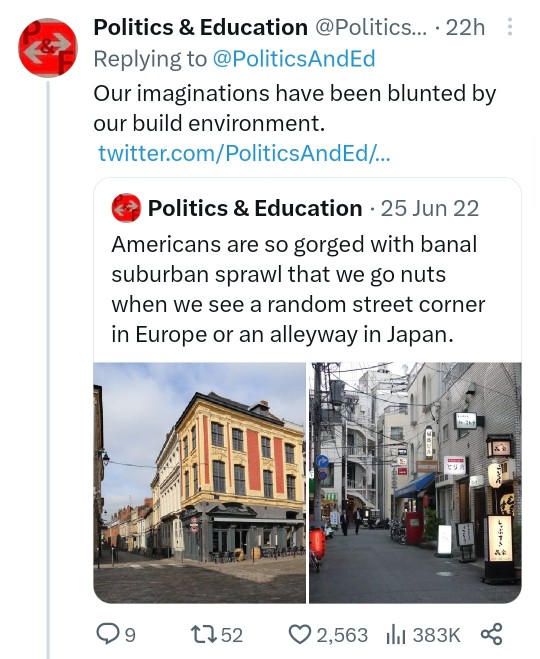
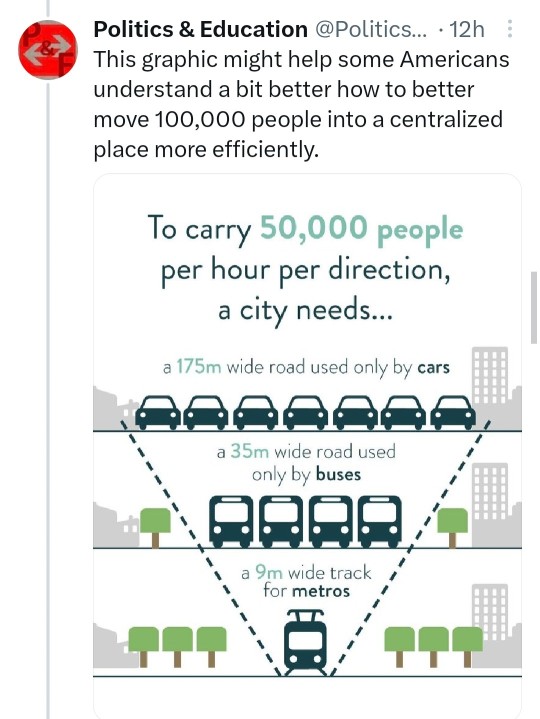
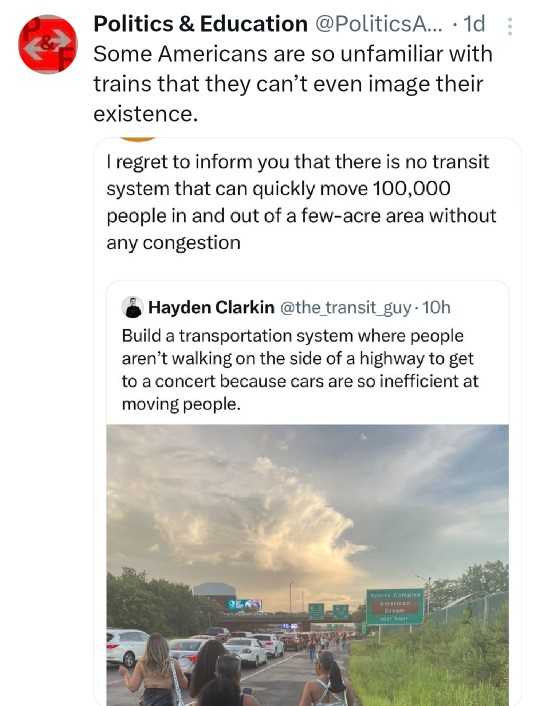
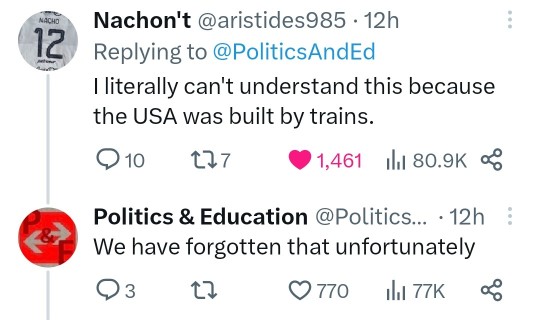
62K notes
·
View notes
Text
1 of the more amusing urbanist things is the focus on urban single family housing neighborhoods like SF's Sunset District or the inner ring of Los Angeles neighborhoods. If you actually look at it, these neighborhoods are so unit dense they approach or exceed the density of a lot of more traditionally "urban" neighborhoods because of the incredibly small lot sizing. If all American suburbs had that lot sizing, sprawl really wouldn't be a problem.
You'll usually see people state that these neighborhoods should be target #1 for upzoning & densification, and while it's not wrong per se, the small lot sizes of these neighborhoods actually make it incredibly difficult to densify under American building codes. You have to go through a long process of land assembly, which adds risk, time, and extra cost. More sprawly suburban neighborhoods are a better target because there's less or no land assembly involved, which is why in a lot of Californian cities you'll see more new apartments in suburban neighborhoods and towns (cheaper labor costs due to less unionization also helps to be clear)
0 notes
Text
Le droit public face aux défis actuels de l’urbanisation
https://justifiable.fr/?p=1237 https://justifiable.fr/?p=1237 #actuels #aux #défis #droit #face #lurbanisation #public Présentation A l’heure de la mutation de l’Etat et du droit public en général, ce colloque se propose d’interroger l’interaction possible entre deux matières phares du droit administratif spécial, à savoir le droit de l’urbanisme et celui de la sécurité, constitutifs d’un binôme jusque-là peu analysé. Aussi, le concept de recherche de sécurité sera-t-il convoqué d’un triple point de vue. Tout d’abord face au risque climatique et environnemental vécu par les collectivités, puis face au risque sociétal d’une démocratie sous contrainte souvent mal ressentie par les administrés, et enfin sous son aspect classique de réponse attendue face à une société et des métropoles urbaines de plus en plus marquées par un ordre public menacé. l s’agira d’y traiter des contraintes juridiques croissantes liées à l’usage des sols et à l’aménagement du territoire, en raison de la nécessité de préserver la biodiversité et les terres agricoles face aux risques climatiques. Les élus locaux sont contraints de limiter l’urbanisation, notamment à travers la « zéro artificialisation nette » (ZAN), ce qui entre en conflit avec le principe de libre administration des collectivités territoriales. Ces contraintes poussent à une densification urbaine, soulevant de nouveaux défis tels que la gestion des risques climatiques (sécheresse, chaleur, gaz à effet de serre) et les besoins accrus en ressources comme l’eau. Ce colloque s’attardera également sur les tensions sociales croissantes dans la gestion de l’aménagement, les citoyens et associations exprimant une insatisfaction quant à leur faible participation dans les décisions publiques. Cela renforce une crise de confiance envers la démocratie et la règle de droit, accentuée par l’intervention du juge dans les litiges d’urbanisme et d’environnement. Enfin, la crise démocratique et les problèmes d’insécurité dans les zones urbaines, aggravés par la surdensité, seront questionnés. Des outils technologiques tels que les caméras de surveillance, drones, et la reconnaissance faciale sont mobilisés pour tenter de rétablir l’ordre public désormais souvent malmené. Quelles sont alors les possibilités, les limites de ces nouvelles technologies, face à un droit de l’urbanisme devant sans cesse faire face à de nouveaux défis. Programme 8h30 : Accueil 9h00 : Propos introductifsXavier Latour Professeur de droit public, Université Côte d’Azur, Doyen de la Faculté de droit et science politique, CERDACFF L’usage de l’espace et des sols A – Les objectifs de gel et d’économie des terres à urbaniser Présidence : Pascale Steichen, Professeure émérite de droit privé, Université Côte d’Azur, GREDEG 9h15 : Les collectivités territoriales face au ZANNelly Sudres, Maître de Conférences en droit public, Université de Montpellier, CREAM Le rôle des préfets, force ou accompagnement ?Bertrand Faure, Professeur de droit public, Université de Nantes, DCS Trait de côte en recul : comment les collectivités territoriales relèvent le défi ?Anaïs Lagelle, Maître de Conférences de droit public, Université Côte d’Azur, LADIE B – La densification des zones urbaines Présidence : Pauline Türk, Professeur de droit public, Université Côte d’Azur, Directrice du CERDACFF Mapping France’s urban growth : Land cover change & Building footprint evolutionDennis Fox, Professeur, Département de Géographie, ESPACE CNRS, Université Côte d’Azur Urbanisme : les collectivités publiques confrontées à la pénurie d’eau ?Olivier Le Bot, Professeur de droit public, Université Aix Marseille Le contentieux associatif, peau de chagrin du recours contre les autorisations d’urbanisme ?Nicolas Beyls, Magistrat au Tribunal administratif de Nice, chercheur associé au CERDACFF Discussion 12h15 : Pause méridienne Insatisfaction des modes de participation à la décision publique Présidence : Grégoire Leray, Professeur de droit privé, Université Côte d’Azur, directeur du CERDP 14h45 : La concertation du public : quelle capacité d’influence sur la décision ?Raphaël Brett, Maître de Conférences en droit public, Université Paris Saclay, IEDP Contester l’aménagement par la force : modalités d’usages et de réception de modes d’action controversésStéphanie Dechezelles, Professeure des Universités en Sociologie, Université de Pau et des pays de l’Adour, TREE-TRansitions Energétiques et Environnementales (UMR 6031) L’ordre public urbain menacé Présidence : Norbert Foulquier, Professeur de droit public, Université Paris I Panthéon- Sorbonne, Directeur du GRIDAUH, Co-directeur du SERDEAUT 15h30 : La rue ou la tentation du numériqueFlorence Nicoud, Professeur de droit public, Université Côte d’Azur, CERDACFF Sécurité, urbanisme et délinquance : bilan de 30 ans d’Etudes de Sécurité Publique (ESP)Marion Chapouton, Docteur en droit public, Université Paris II Panthéon Assas, Secrétaire générale du GRIDAUH Copropriété, surveillance et sécuritéBéatrice Guillaumin, Maître de Conférences, Université Paris I Panthéon-Sorbonne, CERAP, Institut des sciences juridique et philosophique de la Sorbonne Discussion 15h15 : Conclusion et rapport de synthèseChristian Vallar, Professeur agrégé de droit public, Directeur honoraire du CERDACFF, Doyen honoraire, Avocat au barreau de Nice 15h30 : Clôture Contact : [email protected] – Tél. : 04.89.15.25.66 Inscription : https://unica.azur-colloque.fr/inscription/fr/131/inscription Doctorants : Participation validée au titre de la formation doctorale Attestation délivrée sur demande adressée à : [email protected] Colloque organisé par le CERDACFF, Université de Côte d’Azur sous la direction scientifique de Florence Nicoud, Professeur de droit public, Université Côte d’Azur, CERDACFF et Anne Rainaud, MCF en droit public, HDR, Université Côte d’Azur, CERDACFF Source link JUSTIFIABLE s’enrichit avec une nouvelle catégorie dédiée à l’Histoire du droit, alimentée par le flux RSS de univ-droit.fr. Cette section propose des articles approfondis et régulièrement mis à jour sur l’évolution des systèmes juridiques, les grandes doctrines, et les événements marquants qui ont façonné le droit contemporain. Ce nouvel espace est pensé pour les professionnels, les étudiants, et les passionnés d’histoire juridique, en quête de ressources fiables et structurées pour mieux comprendre les fondements et l’évolution des normes juridiques. Plongez dès maintenant dans cette catégorie pour explorer le passé et enrichir vos connaissances juridiques.
0 notes
Text
Global Aggregate In Road Construction Market Analysis 2024: Size Forecast and Growth Prospects
The aggregate in road construction global market report 2024 from The Business Research Company provides comprehensive market statistics, including global market size, regional shares, competitor market share, detailed segments, trends, and opportunities. This report offers an in-depth analysis of current and future industry scenarios, delivering a complete perspective for thriving in the industrial automation software market.
Aggregate In Road Construction Market, 2024 report by The Business Research Company offers comprehensive insights into the current state of the market and highlights future growth opportunities.
Market Size - The aggregate in road construction market size has grown rapidly in recent years. It will grow from $735.36 billion in 2023 to $828.16 billion in 2024 at a compound annual growth rate (CAGR) of 12.6%. The growth in the historic period can be attributed to increasing urbanization, growing population, increasing economic development, growing industrialization, and rising vehicle ownership.
The aggregate in road construction market size is expected to see rapid growth in the next few years. It will grow to $1339.87 billion in 2028 at a compound annual growth rate (CAGR) of 12.8%. The growth in the forecast period can be attributed to smart city initiatives, stricter environmental regulations, rising adoption of green construction, growth in public-private partnerships, and urban densification trends. Major trends in the forecast period include greater automation in construction processes, growth of 3D printing technologies in road building, smart road infrastructure integration, expansion of electric vehicle charging networks, and a focus on reducing carbon emissions in construction.
Order your report now for swift delivery @ https://www.thebusinessresearchcompany.com/report/aggregate-in-road-construction-global-market-report
Scope Of Aggregate In Road Construction Market The Business Research Company's reports encompass a wide range of information, including:
1. Market Size (Historic and Forecast): Analysis of the market's historical performance and projections for future growth.
2. Drivers: Examination of the key factors propelling market growth.
3. Trends: Identification of emerging trends and patterns shaping the market landscape.
4. Key Segments: Breakdown of the market into its primary segments and their respective performance.
5. Focus Regions and Geographies: Insight into the most critical regions and geographical areas influencing the market.
6. Macro Economic Factors: Assessment of broader economic elements impacting the market.
Aggregate In Road Construction Market Overview
Market Drivers - The increasing road transportation is expected to propel the growth of the aggregate in road construction market going forward. Road transportation refers to the movement of people and goods using vehicles on roads. It encompasses a wide range of transportation modes and vehicles. Road transportation is increasing due to more people owning cars, technological advances, improvements in road infrastructure, urbanization, policy and regulation, and the higher demand for quickly delivering goods as cities grow. Aggregate in road construction enhances road durability, load-bearing capacity, and overall infrastructure quality, enabling the development of more extensive and efficient road networks. For instance, in May 2024, according to statistics published by the Department for Transport UK-based government department, between 2022 and 2023, car traffic on Great Britain’s ‘A’ roads increased by 3.3% to 111.6 billion vehicle miles, while van traffic rose by 1.0% to 24.3 billion vehicle miles. Therefore, the increasing road transportation is driving the growth of the aggregate in road construction market.
Market Trends - Major companies operating in the aggregate in road construction market are focusing on developing innovative products such as carbon-neutral asphalt material to support Aggregate Industries' goal of reducing emissions and achieving net-zero construction. Carbon-neutral asphalt material is a type produced that eliminates or offsets carbon emissions, making its overall environmental impact net zero in terms of carbon dioxide. For instance, in March 2024, AGGREGATE Industries, a UK-based construction and building materials company, launched Foamix Eco. This carbon-neutral, cold-lay asphalt is made with a high percentage of recycled materials, reducing reliance on virgin resources and minimizing energy consumption during production. Its use of on-site recycling, reduced HGV movements, and lower carbon footprint makes it a cost-effective, eco-friendly solution that contributes to achieving net zero construction goals.
The aggregate in road construction market covered in this report is segmented –
1) By Type: Granite, Sand, Gravel, Limestone, Crushed Rock, Other Types 2) By Application: Highway Construction, Railway Construction, Other Applications 3) By End-User: Government, Private Contractors, Public-Private Partnership
Get an inside scoop of the aggregate in road construction market, Request now for Sample Report @ https://www.thebusinessresearchcompany.com/sample.aspx?id=18949&type=smp
Regional Insights - North America was the largest region in the aggregate in road construction market in 2023. The regions covered in the aggregate in road construction market report are Asia-Pacific, Western Europe, Eastern Europe, North America, South America, Middle East, Africa.
Key Companies - Major companies operating in the aggregate in road construction market are Holcim Group, CRH plc, CEMEX S.A.B. de C.V., Vulcan Materials Company, Terex Corporation, Buzzi S.p.A., Arcosa Inc., Boral Limited, Breedon Group plc, LSR Group, Adbri Limited, Rogers Group Inc., Carmeuse, Norlite LLC, Eagle Materials Inc., Sully-Miller Contracting Co., Titan America LLC, Stalite Lightweight Aggregate, Salt River Materials Group, Liapor Group, Okanagan Aggregates, Wharehine Construction, Rock Road Companies Inc.
Table of Contents 1. Executive Summary 2. Aggregate In Road Construction Market Report Structure 3. Aggregate In Road Construction Market Trends And Strategies 4. Aggregate In Road Construction Market – Macro Economic Scenario 5. Aggregate In Road Construction Market Size And Growth ….. 27. Aggregate In Road Construction Market Competitor Landscape And Company Profiles 28. Key Mergers And Acquisitions 29. Future Outlook and Potential Analysis 30. Appendix
Contact Us: The Business Research Company Europe: +44 207 1930 708 Asia: +91 88972 63534 Americas: +1 315 623 0293 Email: [email protected]
Follow Us On: LinkedIn: https://in.linkedin.com/company/the-business-research-company Twitter: https://twitter.com/tbrc_info Facebook: https://www.facebook.com/TheBusinessResearchCompany YouTube: https://www.youtube.com/channel/UC24_fI0rV8cR5DxlCpgmyFQ Blog: https://blog.tbrc.info/ Healthcare Blog: https://healthcareresearchreports.com/ Global Market Model: https://www.thebusinessresearchcompany.com/global-market-model
0 notes
Text
I welcome big dumb trucks as the entry point for transportation justice awareness.
Why does anyone need a truck that size?
Why do we build cities so that so many people have to drive around, and always in these big trucks?
Why does that sidewalk suddenly end?
I wouldn't want to wait too long at that bus stop, I wonder how frequently a bus stops there?
Who are these maniacs on bicycles? And why don't they have their own dedicated space?
How can anyone using a wheelchair get around this place?
Opportunity and transportation disparities are hand in hand with racist city planning in the post WWII era when the GI Bill should have equitably raised the living standard for everyone, but redlined Black communities were excluded from the massive influx of cheap lending that likely led to the urban renewal projects that further removed, HEY! HEY!!! I'm not finished! I've barely started! Sit DOWN, Mom, I'm not finished . . .
. . .
Next thing you know you are neck deep in zoning regulations and blithering about ADUs and densification and headways and waving the flag for destroying urban freeways . . .
Fun!
It starts with making fun of big trucks.

Saw this Trucks Discourse on facebook and I'm not part of that world but yeah that one on the left is delightful and I really had no idea just how wasteful and pointless the other kind is until this comparison
75K notes
·
View notes
Text
The Stroads of Chicago
While the older part of the city near the lake is dense, walkable and relatively well-served by transit, the rest...well...isn't.
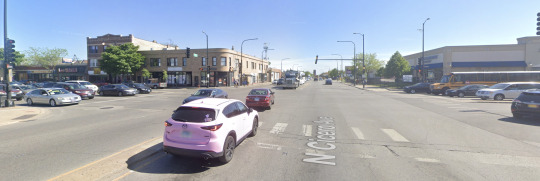
The intersection of N. Cicero and W. North Avenue, where stroads collide.
As newcomers to Chicago, my wife and I like to explore parts of the city we haven't seen yet, and familiarize ourselves with different neighborhoods.
This week, we took a trip westward along Irving Park to Six Corners, then turned down Cicero, then back along Division, with a couple of detours until we went back northward along Lake Shore Drive. In all, we went about six miles west (a little under 10km).
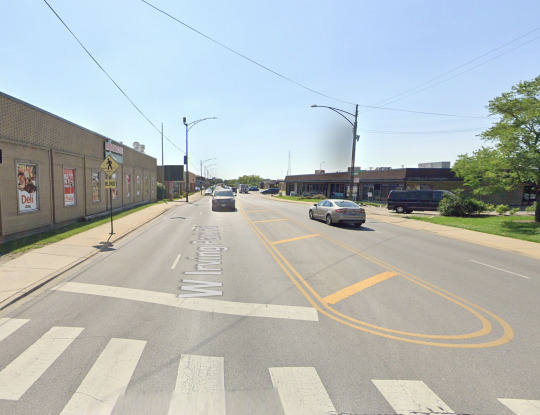
W. Irving Park Road, aka IL-19.
Irving Park, Cicero, and to some degree Division are arterial roads. Arterials are defined as "higher traffic" urban roads, ranking below actual highways.
However, using the Strong Towns definition, these are really stroads - the unfortunate street-highway hybrid that is designed for higher speeds like a highway, with wider lanes; but have multiple potential points for conflicts and accidents such as driveways, turning entrances and exits to parking lots, intersections and crosswalks. Plus, they're usually just a block from residential streets, meaning residents are exposed to highway levels of noise and pollution.
Stroads are highly unpleasant places to walk. The sidewalks, where they exist, are usually narrow, and (as in one spot we noticed along Cicero) obstructed by telephone poles, street signage, utility hardware, and too often, people illegally parked on the sidewalk. They're often impossible to navigate for people using mobility aids like wheelchairs; there's also little to no tree canopy, leaving pedestrians exposed to harsh weather conditions, particularly in summer.
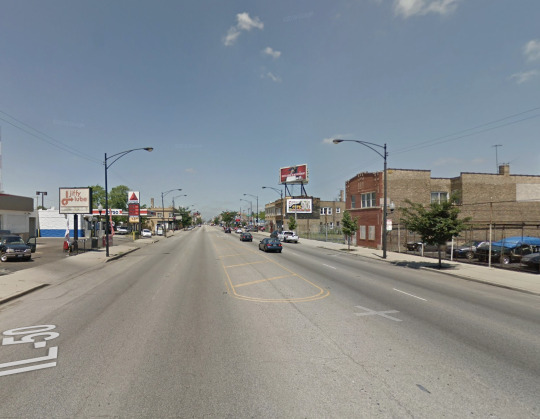
N. Cicero Avenue is mostly a depressing series of new and used car dealerships, gas stations, car repair shops, Jiffy Lubes, and empty storefronts with papered-up windows.
Using Jan Gehl's definition of pedestrian-scale urbanism, there is nothing of interest here; you're faced with long blank walls, nondescript low-rise strip developments fronted by mandated parking, chain-link fences, and empty lots dominated by weeds.
It isn't a place you would willingly walk to, it's a place you drive to and usually only because you have to.
There's no rapid transit to these neighborhoods; just buses. This means residents are often forced into car dependency, and they're also to some degree cut off from jobs, education and other opportunities because of the transit time involved.
For instance, to travel from a typical house in Belmont-Cragin to Columbia College on transit is, at best, about an hour using the bus and CTA trains.
Using buses only (for instance, if the trains are down) it can get closer to two hours.
Imagine if there was a REM-style automated rapid transit line to downtown, at an average speed of 51km/hr; It could make the trip in 11 minutes. Even if there were six additional stops of 30 seconds each along the way, that means you could get from Belmont-Cragin to downtown in maybe 15 minutes, tops.
This is all doable, but it requires money and political will.
Fixing Chicago's Stroads
Thankfully, there are groups, like Strong Towns Chicago, that are advocating for change.
In an op-ed for the Chicago Tribune, Aaron Feldman backs the new plan to redesign Western Avenue, a north-south arterial, using transit and rezoning for higher density housing:
A big part of this proposed transformation is Bus Rapid Transit (BRT), where buses are given dedicated lanes to get them out of car traffic, priority signaling, and (ideally) dedicated boarding stations.
While it'd be wonderful to magically build out a network of REM-like lines to transit-ize these arterials, BRT is a lower-cost option that can be built out relatively quickly.
Rezoning, densification, BRT, and road diets (lane removals; widening sidewalks; installation of protected bike lanes; more crosswalks, etc.) could positively affect all of the stroads we've mentioned, transforming them back into community-centric destination streets, and connecting residents to more opportunities.
This could be supplemented by programs to put short-term "pop up" retail, arts, and other community services into vacant storefronts, to breathe life back into "dead" sections of these streets.
If you're interested in learning more, or participating, here's the links for Strong Towns Chicago:
📷 Strong Towns Chicago on Instagram
💬 Strong Towns Chicago Slack
💌 Strong Towns Chicago Email Newsletter
12 notes
·
View notes
Text
Exploring the Leading Telecom Tower Manufacturers!

In today’s digital age, reliable connectivity is more crucial than ever, and at the heart of this infrastructure are telecom towers. These towering structures not only facilitate communication but also support the increasing demand for data and connectivity. In this article, we’ll explore some of the leading manufacturers of telecom towers that are shaping the landscape of modern telecommunications.
The Importance of Telecom Towers
Telecom towers play a vital role in establishing and maintaining communication networks. They support various technologies, including cellular, microwave, and radio transmissions. As mobile data usage continues to soar, the demand for advanced and efficient telecom towers has never been higher. This demand has led to significant innovations within the industry.
Leading Manufacturers in Telecom Tower Production
American Tower Corporation As one of the largest owners and operators of telecom towers in the world, American Tower Corporation is a key player in the industry. They provide comprehensive solutions for wireless communications, including site leasing and infrastructure development. Their commitment to sustainability and innovation has made them a leader in the telecom tower space.
Crown Castle Known for its extensive portfolio of towers and small cell solutions, Crown Castle focuses on providing connectivity solutions that meet the needs of urban environments. Their expertise in site acquisition and development enables them to build and manage telecom towers effectively, ensuring optimal coverage and capacity.
China Tower Corporation As the world’s largest telecom tower manufacturer, China Tower Corporation supports the rapid expansion of 5G networks across Asia. Their innovative designs and efficient construction methods have set benchmarks in the industry, allowing for quicker deployment of telecommunications infrastructure.
SBA Communications SBA Communications specializes in the development and management of wireless communication infrastructure. With a robust portfolio of towers, they focus on enhancing connectivity for mobile network operators. Their customer-centric approach and strategic partnerships have established them as a trusted name in telecom tower manufacturing.
Ericsson While primarily known for its telecommunications equipment, Ericsson also plays a significant role in the telecom tower market. They provide solutions for network densification, helping operators meet the growing demand for data and enhance user experiences. Their focus on innovation ensures that their towers support the latest technologies.
Innovations in Telecom Tower Design
Leading manufacturers are constantly innovating to meet the evolving needs of the telecom industry. Key trends include:
Smart Towers: These towers are equipped with advanced technologies such as IoT sensors and energy-efficient systems, enabling real-time monitoring and data collection.
Modular Designs: Manufacturers are adopting modular designs that allow for quicker and more flexible installations, reducing time and costs associated with tower construction.
Sustainable Practices: Many telecom tower manufacturers are prioritizing sustainability by using eco-friendly materials and incorporating renewable energy sources into their designs.
The Future of Telecom Towers
As the demand for connectivity continues to rise, the role of telecom towers will become even more critical. Leading manufacturers are poised to address challenges related to network capacity, coverage, and efficiency. The transition to 5G and beyond will drive innovations in tower technology, ensuring that manufacturers remain at the forefront of this dynamic industry.
Conclusion
The telecom tower industry is essential for the advancement of communication technologies. Leading manufacturers play a significant role in shaping the future of connectivity by providing innovative solutions and infrastructure. As we continue to rely on mobile communication and data services, these manufacturers will be key to building the networks that connect us all.
For more insights into the telecom industry and the role of telecom towers, stay tuned to our updates!
0 notes
Text
INTRODUCTION:
Artificial sinkholes can be intentionally introduced for a variety of purposes, though they often involve significant risk. Some of the most common reasons for artificial sinkhole creation include:Mining and Resource Extraction: Underground mining operations can create voids that lead to collapse, effectively creating a sinkhole. While not always intentional, this can be the result of extracting resources like coal, minerals, or oil.Geotechnical Engineering: In construction or civil engineering, controlled collapse of the ground can be induced to stabilize land for future building or development, such as in sinkhole remediation or soil densification processes.Water Management: In certain water management strategies, artificial sinkholes may be created to improve drainage in areas prone to flooding. This often involves the controlled removal of underground materials to redirect water flow.Scientific Research and Testing: Researchers sometimes create controlled sinkholes to study their formation, develop preventive strategies, or test new construction techniques that can mitigate the effects of natural sinkholes.

1.) Mining and Resource Extraction -
In the mining industry, artificial sinkholes can be the result of subsurface mining where minerals, oil, or gas are extracted from beneath the ground. After the extraction of these materials, the remaining void can lead to surface collapse, either intentionally or unintentionally. This phenomenon, called subsidence, can create sinkholes that sometimes improve access to deeper layers of resources. However, such sinkholes may also destabilize the surrounding area, so they must be carefully managed.
2. Geotechnical Engineering and Urban DevelopmentArtificial :
sinkholes can also be created as part of geotechnical engineering efforts to stabilize or prepare land for construction. Controlled collapse methods are used in areas where soil is loose or unstable, allowing engineers to densify the ground to support building
3. Water Management and Drainage Systems:
In areas prone to flooding, artificial sinkholes may be used as a solution to improve drainage and redirect water flow. Known as injection wells or artificial drainage pits, these systems create pathways for water to travel underground, reducing surface water buildup. In karst regions, where natural sinkholes are common, artificial sinkholes may also help restore balance to underground water systems, preventing unexpected natural collapses.
4.Scientific Research and Testing:
Researchers often create controlled, small-scale sinkholes in laboratory or field settings to study how and why sinkholes form, as well as how to prevent them. These artificial sinkholes are invaluable for testing new methods in civil engineering, geology, and disaster prevention. By observing artificially induced collapses, scientists can develop more effective techniques to prevent or mitigate natural sinkholes, especially in urban areas or regions prone to sinkhole formation.
5.Risks and Environmental:
While artificial sinkholes can have practical applications, they pose several risks. Poorly planned or unregulated sinkhole formation can lead to unintended damage to nearby structures, harm to ecosystems, or groundwater contamination. Therefore, any project involving artificial sinkholes requires careful planning, detailed geotechnical surveys, and rigorous environmental assessments to mitigate these risks.In summary, artificial sinkholes, while useful in certain contexts, must be carefully managed and designed to avoid negative outcomes. They represent a balance between human needs—such as resource extraction, land stabilization, and water management—and the complexities of natural processes.
CONCLUSION :
In conclusion, **artificial sinkholes** serve as a powerful tool in various fields such as mining, geotechnical engineering, water management, and scientific research. When carefully designed and executed, they can provide solutions for resource extraction, land stabilization, and drainage control. However, the introduction of artificial sinkholes carries significant risks, including structural instability and environmental damage, making thorough planning and risk assessment essential. Balancing the utility of artificial sinkholes with safety and environmental preservation is key to their successful implementation.
1 note
·
View note
Text
As is my brand, gonna be the YIMBY in the room who pushes back on this a bit. Repeal parking minimums in Spokane if you want, its a dumb subsidy, but I doubt it would change too much because urbanism isn't one size fits all. Spokane is a "city" of 230,000 people; its not small but its certainly not large, and by city we mean a wide field of suburban lots. And its in Middle Of Nowhere, Washington, it is no exurb of Seattle or anything like that.
If you live in Spokane its because you want to live in a suburban house with a yard and stuff. There is not much of a point in trying to make Spokane like Seattle, Seattle is Seattle, that is where the dense urban living and tech jobs and all that in the area are gonna go. Meanwhile Spokane's big industries are like wheat farming & logging. Many people like suburbia, they want that lifestyle, and Spokane's economic realities are built for that. Which means that everyone is, inherently, going to drive everywhere, which means they want parking next to every place they want to go. Which means stores are gonna build that parking to meet the demand.
If Spokane individually wants to embark on densification & walkability, its welcome to, but most "Spokane's" in America won't because there isn't enough people who want that. And there certainly wouldn't be enough if the actual high-demand cities like Seattle did actually launch more real expansions, which is what urban living people actually want. So its a bit of an "eye on the prize" issue - some places are going to want suburbia, and in suburbia everywhere needs parking. No reason to try to fight the least impactful battles imo.
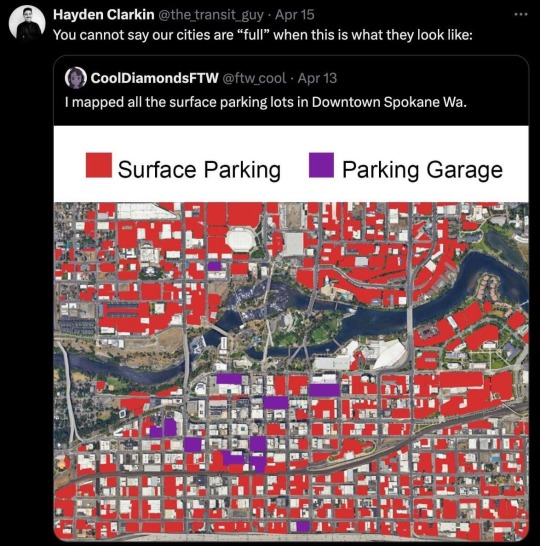
1K notes
·
View notes
Text
Lemon Loaf Lane
you too can prevent terrible street names like this by supporting rapid housing densification instead of urban sprawl
#build up not out#i mean it's not as bad as Equitation Circle#but ottawa developers should have given up after the Mulder Ave & Scully Way intersection
0 notes
Text
Things You Need to Know about Home Lifts
In vertical mobility, home lifts have arisen as an uncommon solution, reevaluating the possibility of convenience and accessibility inside residential spaces. As metropolitan scenes are created and designs become more modern, the interest in passenger elevators inside homes has increased, reflecting a shift towards a lifestyle that focuses on comfort and efficiency.
Home lifts are currently not selective to commercial buildings or high-rise lofts. Today, homeowners are progressively perceived for their unique benefits. Beyond simple convenience, these elevators offer a mix of extravagance and moderation, taking special care of people who try to enhance the usefulness and value of their homes.
One fundamental advantage of integrating a home lift is its ability to work seamlessly across different floors, transcending the limitations posed by stairs, particularly for individuals with mobility troubles or more seasoned inhabitants. Moreover, installing a passenger lift can enhance the property's market charm and resale value, making it an uncommon land asset in an irrefutably extreme market.
Degrees of progress in plan, efficiency, and safety features have signified the headway of home lift advancement. Modern frameworks gloat sleek and minimized designs that seamlessly mix with various structural styles, whether a contemporary metropolitan space or a traditional rural home. Furthermore, these elevators are outfitted with cutting-edge safety components, including crisis brakes and reinforcement power sources, guaranteeing tenants' ideal dependability and inward feeling of harmony.
Home lifts go beyond practicality; they contribute to a more inclusive living environment. They cater to individuals with diverse mobility needs, fostering a sense of freedom and self-reliance. By eliminating the physical barriers associated with navigating multiple floors, these elevators empower residents to fully utilize and enjoy every aspect of their homes, regardless of age or physical ability.
The increasing popularity of home lifts also reflects a broader societal shift towards sustainable and efficient living solutions. By optimizing vertical space utilization, these elevators reduce the need for sprawling floor plans and excessive energy consumption, aligning with the principles of environmental consciousness and urban densification.
In conclusion, the climb of home lifts addresses a change in perspective by how we conceptualize and encounter vertical living. Past simple transportation gadgets, these elevators encapsulate a collaboration of extravagance, usefulness, and inclusivity, reshaping the scene of residential architecture and upgrading homeowners' satisfaction worldwide. As we embrace the time of vertical living, the home lift remains a demonstration of human creativity and the relentless quest for development in the quest for a more accessible and interconnected future.
0 notes